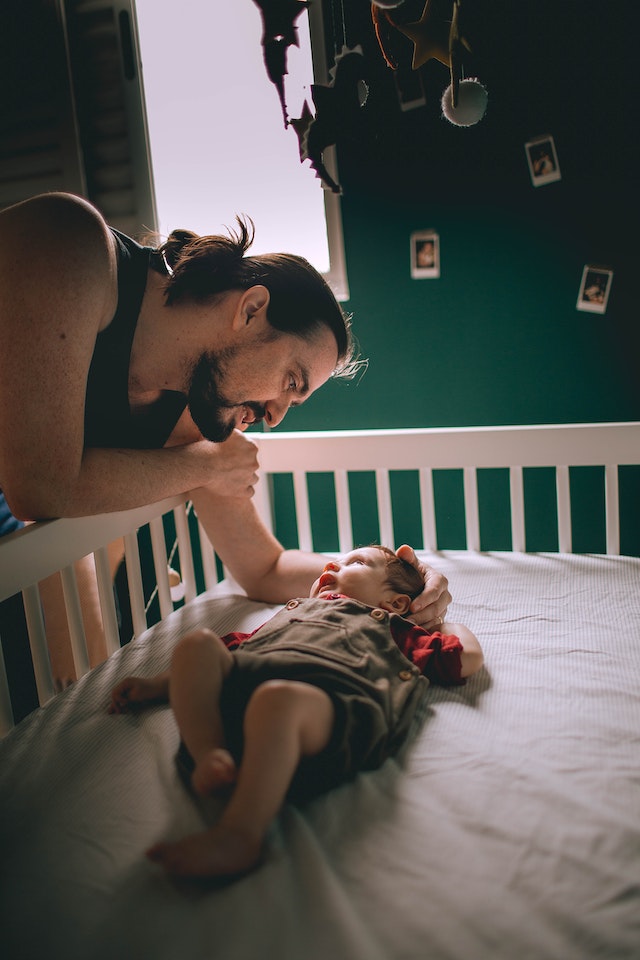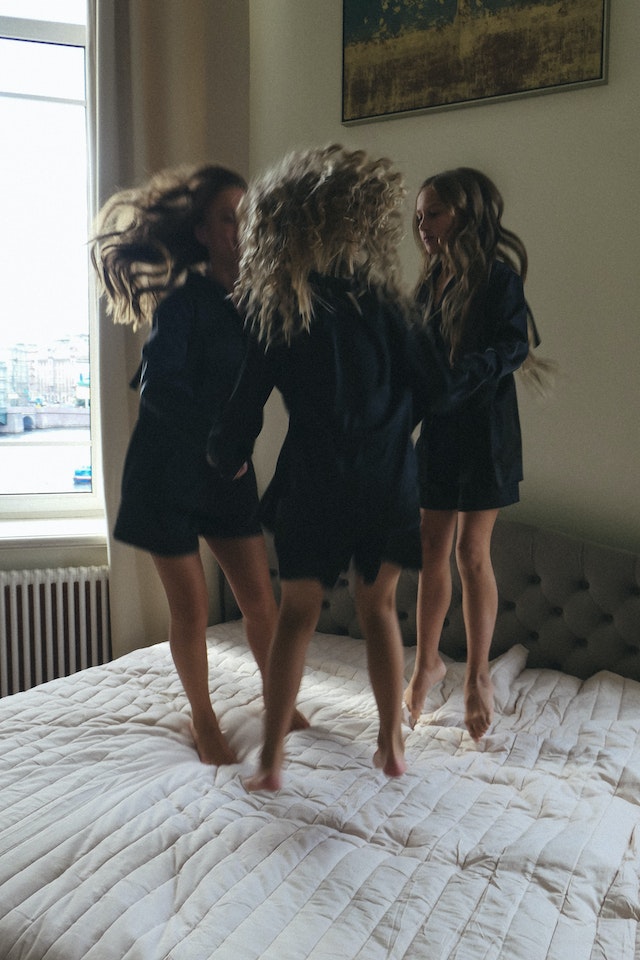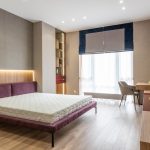Sleep plays a pivotal role in the growth, health, and overall well-being of a child. Thus, choosing the right bed for your little one is of utmost importance. Whether it’s a first bed for your toddler or a new bed for your growing pre-teen, several factors can influence the ideal choice.
Safety: The Primary Concern
Safety should be the topmost concern when selecting a bed for kids.
- Guardrails: For younger children transitioning from a crib to a bed, guardrails can prevent nighttime tumbles.
- Sturdy Construction: Ensure the bed has no sharp edges, and its construction is solid to avoid any accidents.
- Height: A bed that sits lower to the ground is safer for younger children, making it easier for them to get in and out.
Size Matters
The size of the bed you choose should be based on the child’s age, size, and room space.
- Toddler Beds: These are smaller in size, and many come with playful designs. They’re ideal for the transitional phase from a crib.
- Twin Beds: They are a common choice for older children and can last them well into their teenage years.
- Full or Queen Beds: Some parents opt for these sizes to offer more space, particularly if they have the room for it.
Storage Solutions
- Some beds come with built-in storage options, such as drawers or a trundle bed. This can be especially handy for rooms with limited space.
Theme and Design
- Kids often have strong preferences when it comes to the design or theme of their beds. From princess castles to superhero themes, there’s a myriad of options available. It’s essential to strike a balance between what your child wants and what’s practical and long-lasting.
Mattress Quality
- The bed frame is only part of the equation. Investing in a good quality mattress is crucial for your child’s physical development and quality of sleep.
Growth and Longevity
- Consider how long the bed will be appropriate for your child. While themed beds might be enticing for a toddler, they may outgrow it by the time they are in elementary school. Opting for a more neutral design might offer better longevity.
Flexibility: Bunk Beds and Loft Beds
- For households with multiple kids or limited space, bunk beds or loft beds can be an excellent solution. These beds also add an element of fun for kids. Just ensure they are safely constructed, and younger children are not on the top bunk.
Budget
- Last but not least, set a budget. While it’s tempting to splurge on the fanciest bed, remember that kids outgrow things quickly. Strive for a balance between quality and cost-effectiveness.
Selecting the right bed for your child can be both an exciting and daunting task. By considering factors such as safety, size, design, and budget, you can ensure your child has a comfortable and safe place to rest their head every night. Remember, it’s not just about the aesthetics or the price tag; it’s about giving your child the best start to each day with a good night’s sleep.
Contents
A size Chart Table of bed for kids
Certainly, while there are standard sizes for kids’ beds, some variations might exist depending on the manufacturer or region. Here’s a basic size chart table to give you an idea:
| Bed Type | Typical Dimensions (Width x Length in inches) | Description |
|---|---|---|
| Crib | 28 x 52 | Designed for infants and toddlers up to 2 years old. |
| Toddler Bed | 28 x 52 | Similar in size to a crib but designed for toddlers (2-5 years old). Often comes with guardrails. |
| Small Single/Twin | 30 x 75 | Suitable for younger children in smaller rooms. |
| Twin | 39 x 75 | Common choice for older children. Can accommodate adults too. |
| Twin XL | 39 x 80 | Provides extra length, suitable for taller teens. |
| Full/Double | 54 x 75 | Wider bed, can accommodate teens or multiple younger children. |
| Queen | 60 x 80 | Rare for kids, but can be chosen for more space or longer use. |
| Bunk Bed | Varies (usually Twin over Twin or Twin over Full) | Stacked beds ideal for shared rooms. Ensure it is safety certified. |
Remember, the best size will often depend on your child’s age, room space, and personal preference. Always measure the space in your room and compare it to the bed dimensions before making a purchase. And if you’re investing in a mattress separately, ensure that its size matches the bed frame.
Benefits of Beds Specifically Designed for Kids
Children are not just small adults; they have unique needs and requirements, especially when it comes to their sleeping environment. Beds designed specifically for kids address these needs and offer several benefits:
Safety First
- Guardrails: These provide added safety for young children, reducing the risk of nighttime falls.
- Rounded Edges and Corners: Kids’ beds are designed with rounded edges and corners to prevent injuries.
- Height: Kids’ beds are often designed lower to the ground, making it easier and safer for little ones to get in and out without adult assistance.
Ergonomic Design
- Proper Support: Kids’ beds and mattresses are tailored for growing bodies, ensuring that they get the right amount of support to avoid developing posture issues.
- Size Appropriate: The size of the bed is matched to the child’s size, making them feel secure and comfortable.
Encourages Independence
- Accessible: A bed made for kids empowers them to manage their sleep routine. They can climb in and out by themselves, fostering a sense of independence.
- Responsibility: Having their bed teaches children responsibility, such as making their bed in the morning.
Aids in Transition
- From Crib to Bed: Transitioning from a crib to a full-sized bed can be challenging. Toddler beds, which are specifically designed for this purpose, bridge the gap and make this transition smoother.
Fun and Creativity
- Themed Designs: From race cars to fairy princess castles, kid-specific designs can make bedtime more enticing.
- Personal Space: Kids’ beds often become a centre for their imaginative play, giving them their private space to dream and create.
Storage and Space-Efficiency
- Integrated Storage: Many kids’ beds come with built-in storage options like drawers or under-bed compartments, making it easier to organize toys, books, and clothes.
- Space Savers: Loft beds or bunk beds are perfect for smaller rooms or shared spaces, maximizing the available floor area.
Adaptability and Longevity
- Convertible Designs: Some kids’ beds can convert from a toddler size to a twin bed, ensuring the bed grows with the child.
- Durability: Kids’ beds are made keeping in mind the wear and tear they’ll endure. They are often more robust and designed to withstand jumps, bounces, and the usual kid energy.
Improved Sleep Quality
- Comfort: A comfortable bed tailored for kids promotes better sleep quality.
- Routine: Having a designated bed helps establish a consistent bedtime routine, which is crucial for the overall health and development of a child.
Beds designed specifically for kids don’t just offer a place to sleep. They provide a secure, comfortable, and fun environment that caters to a child’s developmental needs. Investing in a good quality kid’s bed not only ensures their safety but also promotes healthy growth, fosters independence, and makes bedtime an enjoyable experience.
Tips for Buying Bed for Kids
Choosing the right bed for your child is an essential decision, considering they’ll spend a significant amount of time there, both for sleeping and often for playing. Here are some tips to guide you in making the best choice:
Safety Comes First
- Opt for beds with rounded edges and corners to prevent injuries.
- For younger kids, look for beds with built-in guardrails or the option to add them.
- Check for any small parts or gaps where little fingers could get trapped.
- Consider the Size
- Think about how long you want the bed to last. For example, while a toddler bed is suitable for younger children, they can outgrow it quickly.
- Measure the room space to ensure the bed fits comfortably with enough space left for play and other furniture.
Think Long-Term
- Opt for a more neutral design if you want it to last through various ages and phases.
- Consider beds that can convert or adapt as your child grows, such as those that transition from toddler to twin size.
Check the Construction
- Ensure the bed is sturdy and made of high-quality, durable materials.
- If considering a bunk bed, ensure it meets safety standards and has a sturdy ladder and guardrails.
Prioritize a Good Mattress
- Invest in a high-quality mattress that supports your child’s developing spine.
- Ensure the mattress fits the bed frame perfectly without any significant gaps.
Storage Solutions
- Look for beds with built-in storage, such as drawers or shelves. They can be lifesavers in smaller rooms or for kids with lots of toys and books.
Involve Your Child
- If age-appropriate, involve your child in the decision. They’re more likely to be excited about bedtime if they love their bed.
Stay Within Budget
- While it’s tempting to splurge, remember to set a budget and stick to it. There are plenty of great beds available at various price points.
Check Reviews and Recommendations
- Before finalizing a purchase, read customer reviews or ask friends and family for recommendations.
Consider the Future
- If you anticipate another child or having guests over, think about trundle beds or bunk beds.
Assembly and Delivery
- Check if the bed comes assembled or requires assembly. Ensure you have the necessary tools and help.
- Consider delivery options. Some companies will deliver and set up the bed in your child’s room.
Warranty and Return Policy
- It’s always a good idea to buy from manufacturers or sellers who offer a warranty. Also, familiarize yourself with the return or exchange policy in case the bed doesn’t fit or meet your expectations.
By keeping these tips in mind and prioritizing safety and comfort, you’ll be well-equipped to choose the perfect bed for your child’s needs.
Tricks for Kids’ Beds: Making Bedtime Fun and Functional
Turning a child’s bed into a functional and delightful space doesn’t just have to be about purchasing the right type of bed. With some creative tricks, you can enhance their bedtime experience, optimize storage, and even make the bed a focal point of their room’s theme. Here are some ingenious tricks:
Canopy Wonderland
- Drape soft fabrics or nets around the bed to create a canopy. This instantly transforms a basic bed into a magical realm, be it a princess’s castle, a forest hideaway, or a superhero’s lair.
Bed Tents
- Invest in bed tents or make your own. These are great for creating a private, cozy space and can be particularly useful for children who share a room.
Under-Bed Storage
- Use rolling storage boxes or drawers under the bed. This can be a place for toys, clothes, or even books. It’s a great way to utilize space and keep the room tidy.
DIY Themes
- Use decals, stickers, or removable wall art to match the bed with a room theme. This way, if your child’s preferences change, you can easily switch it up.
Glow in the Dark
- Add glow-in-the-dark stars or shapes on or around the bed. Not only does this serve as a fun decoration, but it can also act as a nightlight for kids who might be afraid of the dark.
Bed Slides
- Some loft or bunk beds come with a slide option. Not only is this fun, but it might also make waking up for school a bit more exciting!
Reading Nook
- Attach a small shelf or book rack on the side of the bed. Pair it with a clip-on reading light, and you’ve created a perfect reading nook.
Interactive Bed Linen
- There are bed linens available with game prints like tic-tac-toe or board games. It’s a fun way to make the bed interactive.
Personalize It
- Get personalized bed linens with your child’s name or favorite colors. It can make the bed feel special and unique to them.
Safety and Fun
- For kids transitioning from a crib, make the bed feel secure by adding stuffed animals or soft bumpers. This not only adds an element of fun but also provides additional safety.
Pillow Play
- Invest in fun and quirky pillows. Whether they’re shaped like animals, stars, or other objects, they can turn a simple bed into a delightful space.
Trundle Bed for Sleepovers
- If space allows, a trundle bed is a brilliant addition. It’s great for sleepovers and can be tucked away when not in use.
Clip-on Accessories
- Attach clip-on cup holders, storage pouches, or even little baskets to the side of the bed. This can be handy for storing nighttime essentials like a water bottle or a favorite toy.
Incorporating some of these tricks can not only make your child’s bed visually appealing but also more functional and enjoyable for them. It’s about creating a space where they feel secure, comfortable, and inspired.
Example of bed for kids
Here’s a detailed example of a popular kids’ bed option:
Description:
A Captain’s bed, also known as a storage bed, typically comes in twin or full size and is raised on a platform, which contains drawers underneath for efficient storage. The design is a practical solution for children’s bedrooms, especially in spaces where storage might be limited.
Key Features:
- Built-in Storage: Captain’s beds come with multiple drawers beneath the mattress platform. These can be used for clothes, toys, books, or other personal belongings, making it a space-saving furniture piece.
- Versatility: This bed type is often available in various styles, from traditional to contemporary, to match room decor. The design is suitable for kids of all ages, from toddler to teen.
- Sturdiness: Since the bed is designed with storage in mind, it tends to be solid and durable, offering a stable sleep surface.
- Safety: Most Captain’s beds for kids are lower to the ground than traditional beds. This design reduces the risk of injury from falls and can be a great transition bed from a crib.
Optional Add-ons:
- Headboard Storage: Some designs integrate shelves or cabinets in the headboard, offering even more storage space.
- Trundle: Certain Captain’s beds come with a trundle option, perfect for sleepovers.
- Decorative Elements: Depending on the design, the bed might come with decorative knobs, carved designs, or painted elements that appeal to kids.
Pros:
- Space-saving with built-in storage.
- Durable due to its solid construction.
- Variety of designs to match room themes.
Cons:
- Might be heavier than other bed types due to the storage components.
- Can be a bit more expensive because of its multifunctionality.
Recommendation:
- The Captain’s bed is an excellent choice for kids who have a lot of belongings but limited room space. Its combination of sleep space and storage makes it an efficient piece of furniture, and its design ensures it will remain relevant as the child grows.
When considering any bed type, it’s essential to view it in person, if possible, to assess the quality, and to read user reviews for insights on durability and ease of assembly.

Frequently Asked Questions about Bed for Kids
- At what age should I transition my child from a crib to a bed?
Answer: While there’s no strict age rule, many parents make the transition when their child is between 18 to 36 months old. A common indicator is when a child starts trying to climb out of their crib.
- Is a bunk bed safe for my kids?
Answer: Bunk beds can be safe if they meet safety standards, are sturdily constructed, and are used properly. Ensure the bunk bed has guardrails on all sides, and children under six should not sleep on the top bunk.
- How can I make my child’s bed more comfortable?
Answer: Invest in a high-quality mattress, breathable bed linens, a comfortable pillow, and perhaps a mattress topper. Regularly cleaning the bedding also helps in maintaining comfort.
- Should I buy a bed with storage for my child’s room?
Answer: If the room is limited in space or if your child has many belongings, beds with built-in storage like Captain’s beds can be a practical choice.
- How long should a child’s mattress last?
Answer: A good quality mattress can last anywhere from 7 to 10 years. However, considering the growth and changing needs of children, you might need to replace it sooner.
- Are themed beds a good idea?
Answer: Themed beds can be exciting for kids and make bedtime fun. However, children’s preferences change as they grow, so consider how long the theme will be appropriate or if it can be easily modified.
- What safety features should I look for in a kid’s bed?
Answer: Look for beds with rounded edges, sturdy construction, and, if elevated, guardrails. For bunk beds, ensure a stable ladder and railings on the top bunk.
- Can I buy an adult-sized bed for my child?
Answer: Yes, some parents opt for full-sized or even queen-sized beds for older kids or to make the bed a long-term investment. Just ensure the bed height is appropriate for your child to climb in and out safely.
- How do I protect the mattress from bedwetting?
Answer: Consider purchasing a waterproof mattress protector. It’s a breathable layer that shields the mattress from spills and accidents.
- How often should I replace my child’s bed linens?
Answer: Bed linens should be washed every 1-2 weeks. Depending on wear and tear, consider replacing bed linens every 1-2 years or when they show signs of significant wear.
When choosing a bed and related items for kids, always consider the safety, comfort, and long-term usability of the product. Every child is unique, so it’s essential to cater to their individual needs and preferences.
Conclusion
Selecting the right bed for kids is more than just choosing a piece of furniture. It’s about creating a sanctuary of rest, comfort, and imagination. A child’s bed is where dreams are nurtured, where storybook tales come to life in their slumber, and where they recharge for another day of growth and discovery.
The benefits of appropriately designed beds for children are manifold. From ensuring safety with features like guardrails and rounded edges to fostering independence as they develop, the right bed can make a significant difference in a child’s life. Furthermore, as children grow and evolve, their bed often becomes an anchor in their personal space—a hub of comfort and familiarity.
With numerous options available, from the practicality of Captain’s beds with ample storage to the allure of themed beds that ignite a child’s imagination, there’s a perfect bed to match each child’s unique needs and personality. By considering aspects like size, longevity, construction quality, and adaptability, parents can make informed decisions that provide their kids with a bed that serves both function and fun.
Incorporating clever tricks like canopies, bed tents, or interactive bed linens can further enhance the bed’s appeal, making bedtime something to look forward to. These touches often make the bed a focal point of the room, adding layers of functionality and charm.
While a bed is undeniably a staple piece of furniture, for children, it embodies so much more. It represents a cocoon of security, a playground of imagination, and a foundation for healthy growth and development. Choosing the right bed is an investment not just in their sleep but in their overall well-being and happiness.







